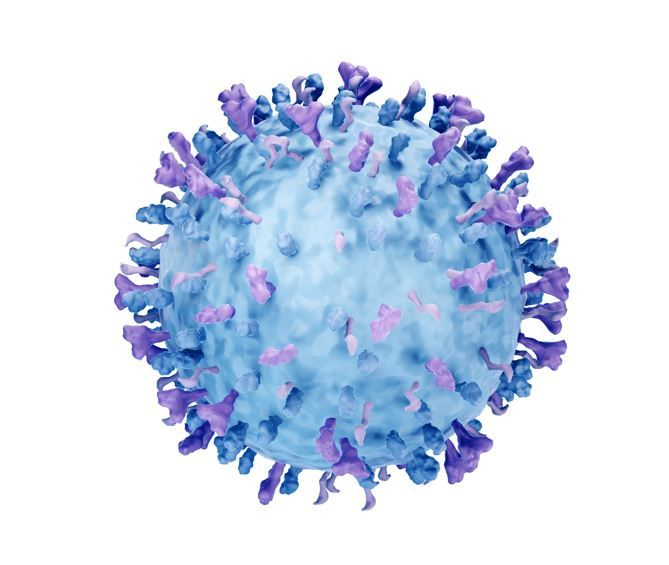- Clinical Technology
- Adult Immunization
- Hepatology
- Pediatric Immunization
- Screening
- Psychiatry
- Allergy
- Women's Health
- Cardiology
- Pediatrics
- Dermatology
- Endocrinology
- Pain Management
- Gastroenterology
- Infectious Disease
- Obesity Medicine
- Rheumatology
- Nephrology
- Neurology
- Pulmonology
IDWeek 2023 Late Breaker: Efficacy of Single RSVPreF3 Dose Sustained Over 2 Seasons in High-Risk Older Adults
Vaccine efficacy (VE) of a single dose of RSVPreF3 OA in adults aged 60 years and older is sustained for 2 full seasons against respiratory syncytial virus-related lower respiratory tract disease (RSV-LRTD), according to a late breaking abstract presented Friday at IDWeek 2023 in Boston, MA.
©Artur/stock.adobe.com

The findings, presented during the COVID-19 and Friends oral abstract session by Michael G. Ison, MD MS, chief of the respiratory disease branch of the National Institutes of Health, revealed VE of 67.2% against RSV-LRTD over 2 seasons and the same level of VE with annual revaccination over 2 seasons. Moreover, VE was observed against severe RSV-LRTD and disease among older adults most vulnerable to severe presentation, ie, those with comorbidities and frailty, according to the study abstract.
RSVPreF3 OA was approved in May by the US Food and Drug Administration for prevention of RSV-LRTD in adults 60-years-old and older. The current study explored the persistence of VE of a single vaccine dose as well as VE and safety of the shot for an annual revaccination dose, over 2 RSV seasons.
For the phase 3, placebo controlled, multi-country study (NCT04886596), Ison and colleagues randomly assigned adults aged 60 years and older in 1:1 ratio to receive RSVPreF3 OA or placebo in advance of RSV season 1. Participants who received the study vaccine were then randomly re-assigned prior to the beginning of RSV season 2 to receive a second RSVPreF3 OA dose (RSV/annual group) or placebo (RSV/1dose group). The participants who received placebo before the start of RSV season 1 were given an additional dose of placebo (placebo group).
Investigator-identified outcomes of interest assessed over the 2-year study period were VE against the first occurrence of RSV-LRTD (confirmatory secondary objectives), occurrence of severe RSV-LRTD, occurrence of RSV-LRTD by age, baseline comorbidity and frailty status, and RSV-related acute respiratory illness (ARI). was assessed over 2 seasons, according to the study. Ison et al evaluated RSVPreF3 OA reactogenicity and safety, as well.
RESULTS
According to the abstract, there were 24 973 participants vaccinated before RSV season 1; of those, 24 967 were included in the VE analyses, assigned as follows:
- RSV/annual: 6242
- RSV/1dose: 6227
- Placebo: 12 498
The median length of follow-up over the 2 RSV seasons was 17.8 months.
Analysis of final data showed the VE of a single RSVPreF3 OA dose against RSV-LRTD over 2 seasons was 67.2% (97.5% CI, 48.2–80.0). The researchers found a similar VE in the group that was revaccinated over 2 seasons of 67.1% (97.5% CI, 48.1–80.0).
Importantly, Ison and colleagues found sustained VE over 2 seasons among the cohort of older adults against severe RVS-LRTD and against RSV-LRTD among study participants aged 60 to 69 years and those aged 70 to 79 years; with at least 1 baseline comorbidity of interest; and identified as having pre-frailty. They also observed sustained VE against RSV-ARI.
The reactogenicity and safety observed with the second RSVPreF3 OA dose was “in line” with the first dose, investigators wrote.
“One dose of RSVPreF3 OA is efficacious against RSV-LRTD in adults ≥ 60 YOA over 2 full RSV seasons, as well as against severe RSV-LRTD, and in adults with advanced ages and underlying comorbidities,” the researchers concluded. They emphasize that in this study, they did not observe additional efficacy benefit after revaccination against RSV-LRTD before a subsequent RSV season; however, the clinical safety profile of the second RSVPreF3 OA dose was acceptable. “The clinical development program will further evaluate persistence and the best timing for revaccination,” they said.
Source: Ison MG, Papi A, Langley JM, et al. Efficacy of one dose of the respiratory syncytial virus (RSV) prefusion F protein vaccine (RSVPreF3 OA) in adults ≥ 60 years of age persists for 2 RSV seasons. Abstract presented at IDWeek; October 11-15, 2023; Boston, MA.
Click here for more Patient Care coverage of IDWeek 2023 news.
